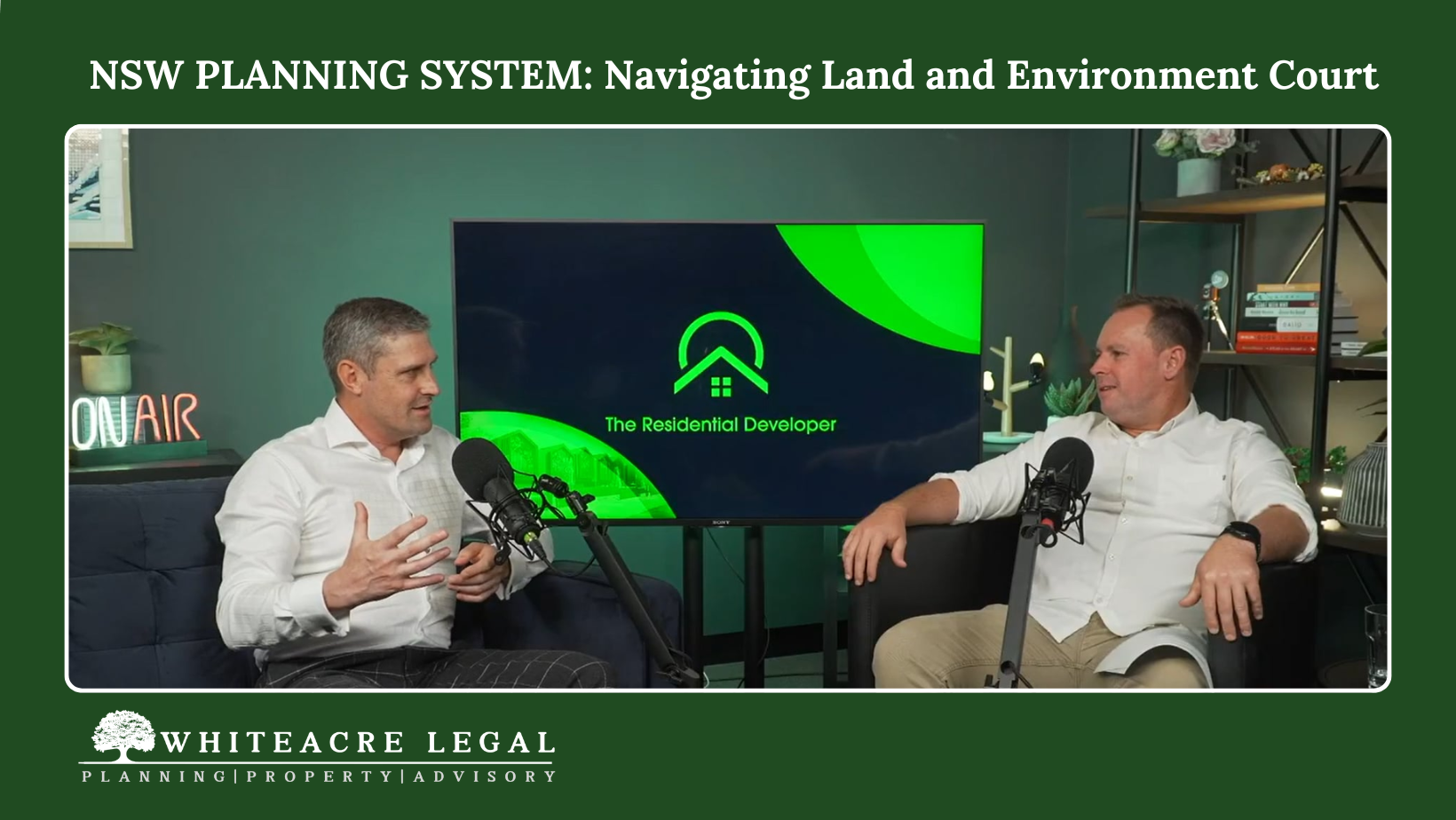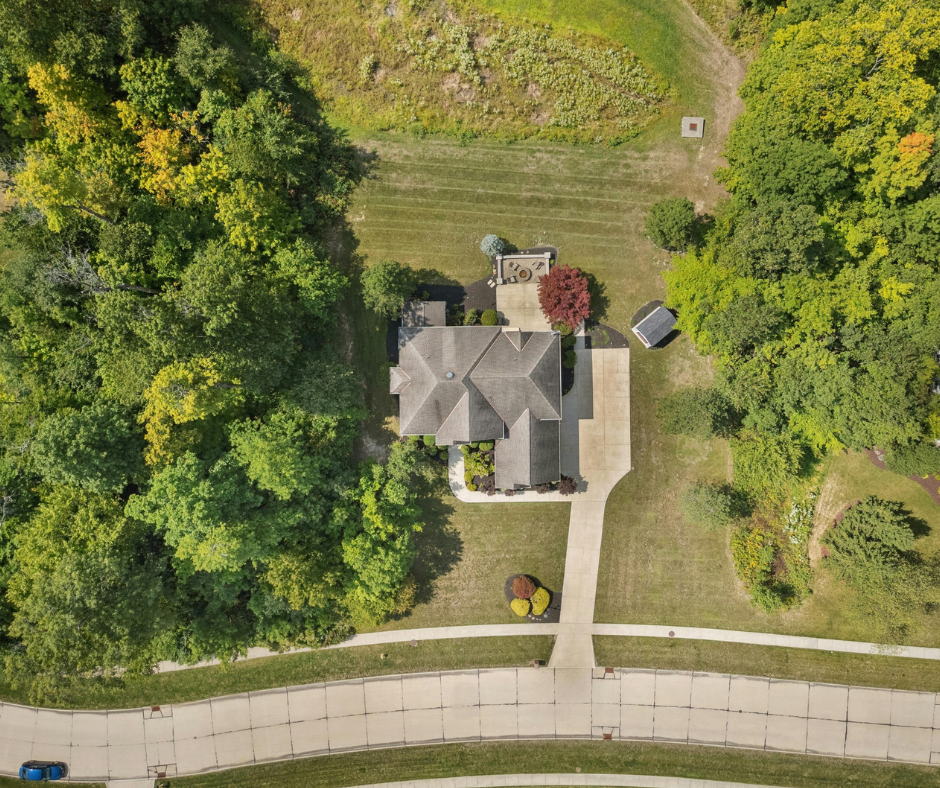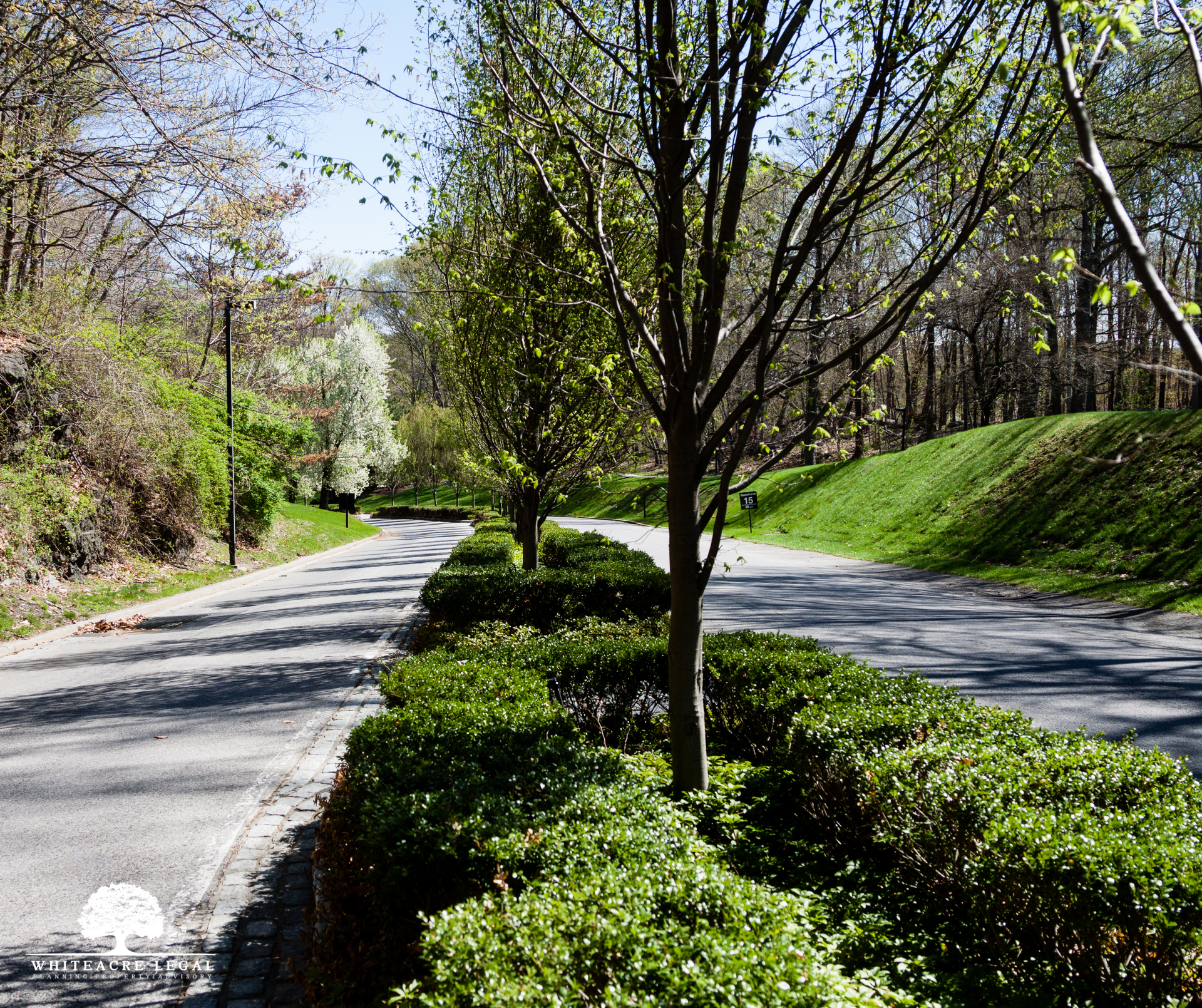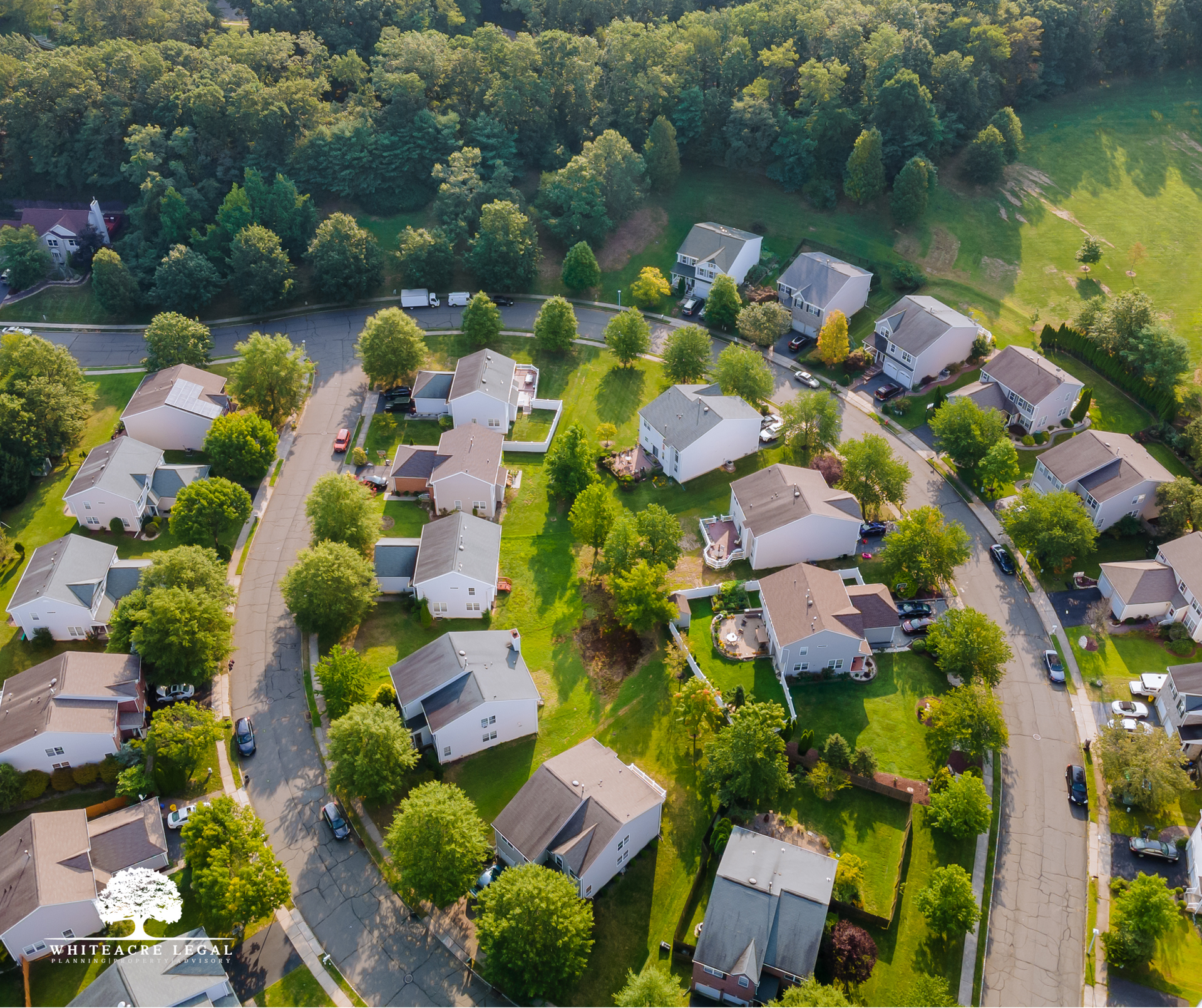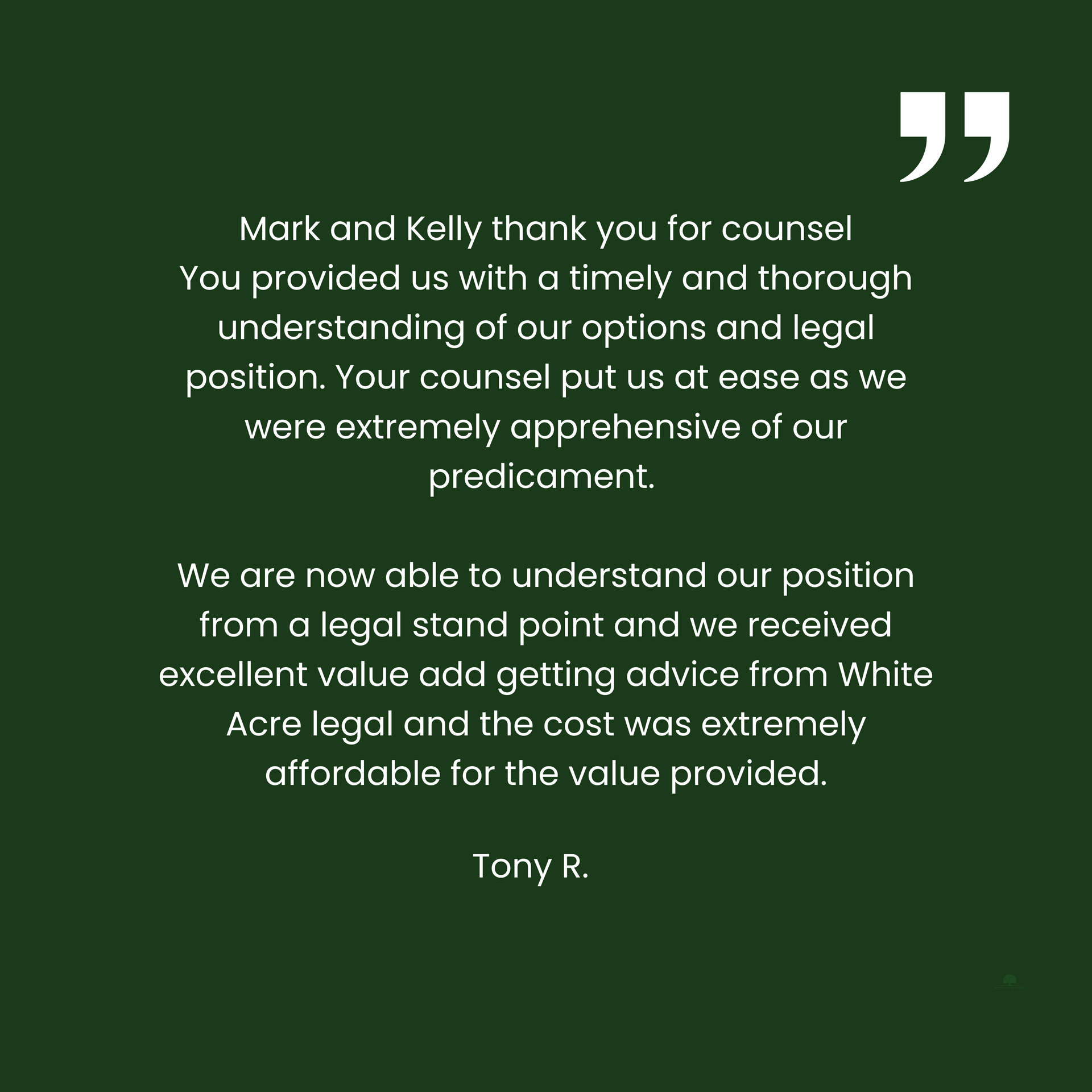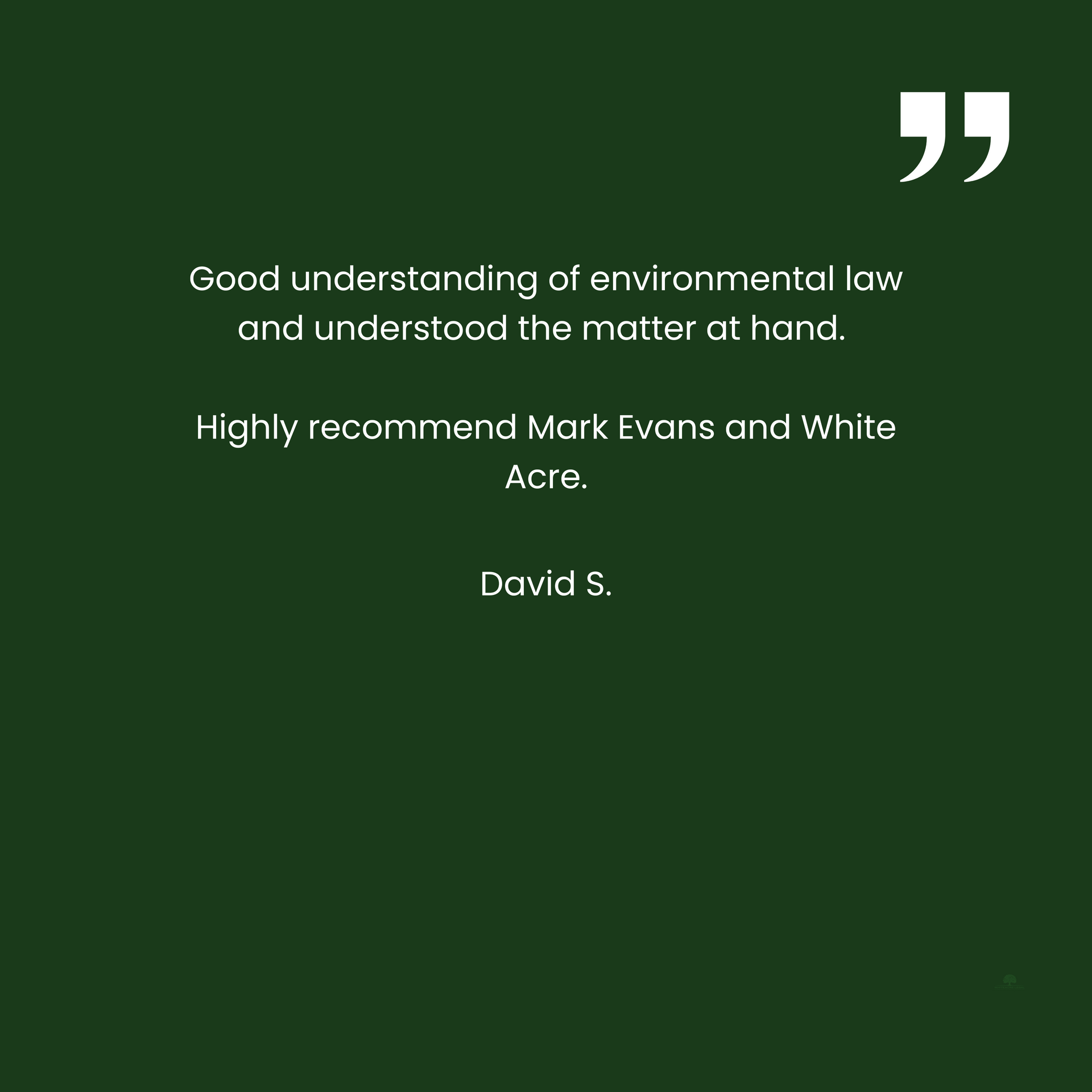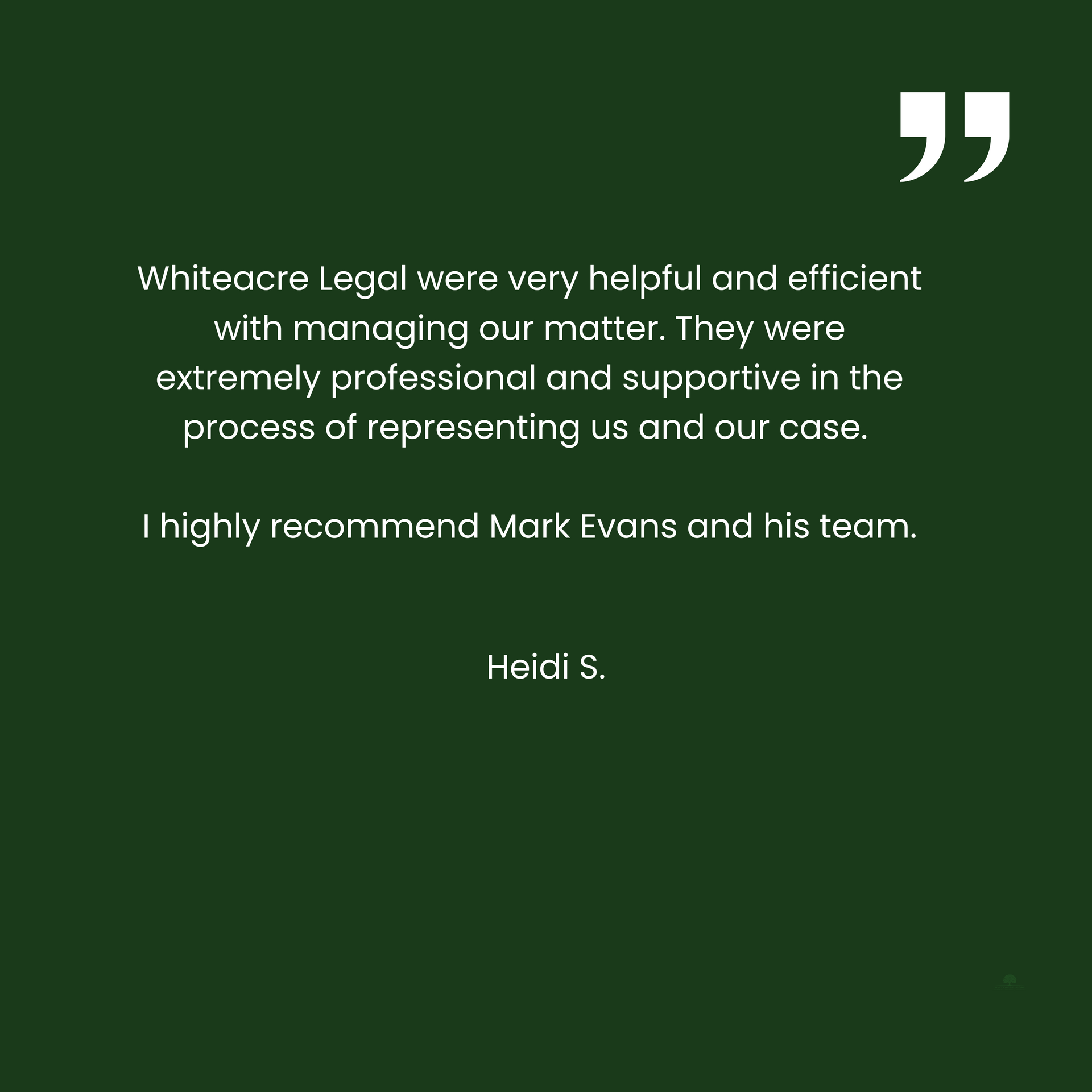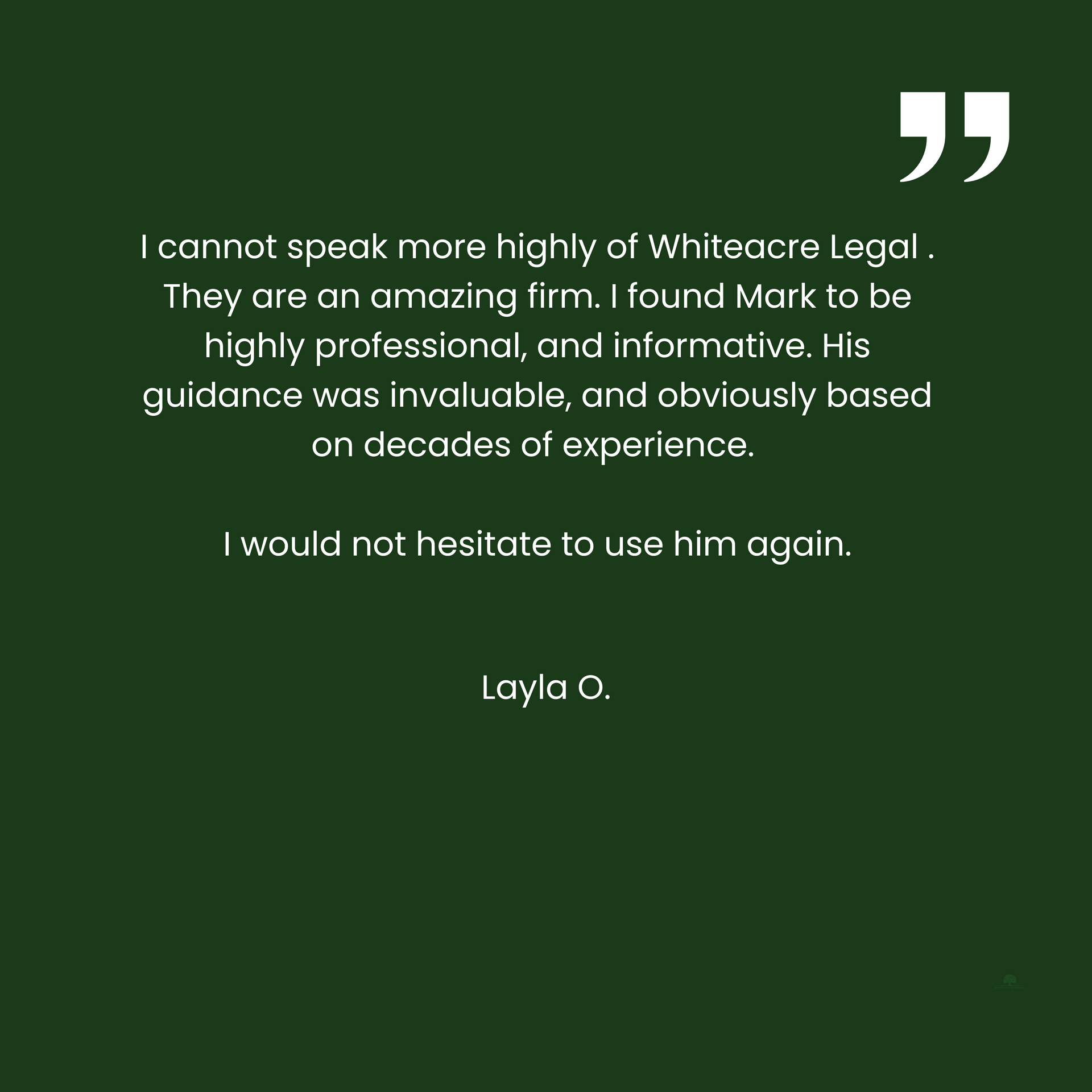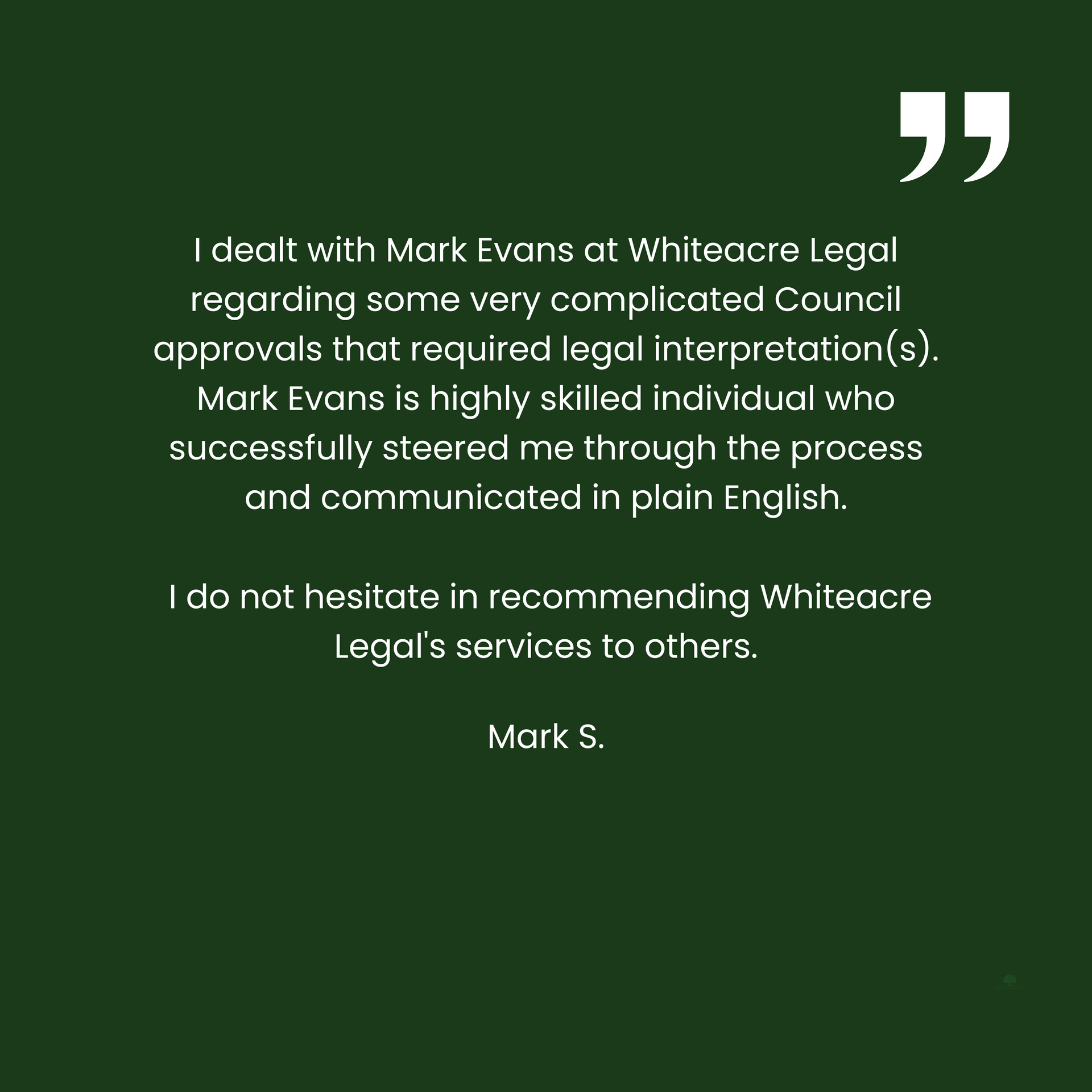Stormwater discharge, surface runoff and the law of nuisance
This article discusses the rights of landowners regarding surface runoff and the discharge of stormwater between properties. Specifically, this article is concerned with the rights and obligations of landowners to discharge stormwater from their land and to receive natural surface runoff.
General Principles
Generally speaking, a landowner is not liable for the natural surface runoff across their land. That position changes when a landowner alters the natural contours of their land, collects or concentrates the surface runoff or redirects and discharges the surface runoff into another person’s land.
A landowner also has a natural right to allow water to pass through a watercourse on their land into neighbouring land. The landowner may not hoard the water on their land, nor may a neighbour block the watercourse thereby flooding lands upstream. These general rules are described in greater detail below, first with regard to common law riparian rights and then with regard to surface runoff and the tort of nuisance.
Common law riparian rights and natural watercourses
Natural waterways, creeks and rivers in Australia are subject to legislation which takes precedence over the common law. For example, water sources in New South Wales including the collection and taking of water from rivers and creeks are generally managed through the Water Management Act 2000.
It is still important to understand the common law position regarding water flowing through one’s land, particularly as it relates to surface runoff and discharge into a watercourse or depression in the land.
Common law position
An owner of land is obliged to accept, and is entitled to have, water pass through a watercourse on their property. This is known as the common law rights of riparian owners in respect of natural watercourses, described by Windeyer J in Gartner v Kidman [1962] 108 CLR 12 ( Gartner v Kidman ) at (p 24).
“[7] By the common law the proprietor of land upon the banks of a natural stream of running water, is entitled to have, and is obliged to accept, the flow of water past his land. He cannot either deprive those lower down the stream of its flow nor pen it back upon the lands of his neighbour higher up. These rights and obligations do not depend on prescription or grant. They are proprietary in character, natural incidents of the ownership or lawful possession of the land abutting on the stream: Mason v. Hill (1833) 5 B &Ad 1 (110 ER 692); Wood v. Waud (1849) 3 Exch 748, at p 774 (154 ER 1047, at p 1058); Chasemore v. Richards (1859) 7 HLC 349 (11 ER 140), per Lord Wensleydale (1859) 7 HLC, at p 382 (11 ER, at p 153). They do not depend upon the ownership of the bed of the stream, but of its banks: Lord v. Commissioners of Sydney (1859) 12 Moo PC 473 (14 ER 991); Lyon v. Fishmongers Co . (1876) 1 App Cas 662, per Lord Selborne (1876) 1 App Cas, at p 683 . They are thus called riparian rights. It is unnecessary to multiply references to cases in which these rules of the common law have been enunciated and followed in Australia. It is enough to refer to H. Jones & Co. Pty. Ltd. v. Kingborough Corporation (1950) 82 CLR 282, in this Court, and especially to the judgement of Fullagar J.”
This is a simple proposition when considering a river with well defined banks. The situation is more complicated where the watercourse may be intermittent or where the banks are less well defined.
The distinction between a watercourse and a depression was considered by Hood J. in Lyons v. Winter (1899) 25 VLR 464, who, in that case, held that a depression which took rain water for about three months of a year fell short of the legal definition of a natural watercourse:
"to constitute such a watercourse, as a matter of law, there must be a stream of water flowing in a defined channel or between something in the nature of banks. The stream may be very small, and need not always run, nor need the banks be clearly or sharply defined. But there must be a course, marked on earth by visible signs, along which water usually flows, in order to constitute a watercourse such as creates riparian rights" per Hood J at p465.
Artificial watercourses
The common law rights of riparian owners in respect of natural watercourses (above) do not apply to artificial watercourses. Specifically, a landowner has no natural riparian right to construct a watercourse and drain water through a neighbour’s land. Equally, an owner of neighbouring land has no obligation to accept water onto its land from an artificial watercourse: Gartner v Kidman at per Windeyer J at (p 24).
“The position of an artificial watercourse, that is a water channel constructed by man as distinct from a natural stream, is entirely different. Generally speaking the owner of land through which an artificial watercourse runs may block or divert it at his will, unless some easement over it has been acquired by grant or prescription.”
Summary
In summary a landowner has both an obligation to permit water to flow through a natural watercourse on their land and a right to have water flow through that natural watercourse.
However, those natural riparian rights do not apply to artificial watercourses. In those cases, permission from neighbouring landowners or rights such as easements over neighbouring land are required.
Natural surface runoff
As a general rule, an owner of higher land may allow surface water (runoff) to drain naturally onto lower land: Gartner v Kidman (1962) 108 CLR 12; Palmer v Bowman [2000] 1 WLR 842 (CA).
This right to drain surface runoff is limited and does not extend to:
a. water that has fallen naturally onto the higher ground but has been artificially accumulated: Baird v Williamson (1863) 15 CBNS 376; 143 ER 831; or
b. water that has been artificially channelled from the higher land onto the lower land: Hurdman v North Eastern Railway Co (1878) 3 CPD 168.
An owner of higher land must obtain permission to discharge concentrated flows onto lower land or must obtain rights to do so via an easement: Baily & Co. v Clark, Son & Morland (1902) 1 Ch 649 per Vaughan Williams L.J. at pp 663, 664; Rameshur Pershad Narain Singh v. Koonj Behari Pattuk (1878) LR 4 AC 121 per Sir Montague Smith at p26; Gartner v Kidman per Windeyer J at (p24).
Even though there is no action against the owner of the higher land with respect to natural, surface runoff, the owner of the lower land is not bound to receive that surface runoff: Gartner v Kidman per Windeyer J at (p 49).
An owner of lower land can, in some cases, erect barriers to hold back water from higher land, provided the owner of the lower land uses reasonable care and skill and does no more than is necessary to reasonably protect the lower land: Gartner v Kidman ; Home Brewery Co Ltd v William Davis & Co (Leicester) Ltd [1987] QB 339.
Whether the owner of the lower land has used reasonable care and skill and does no more than is necessary to reasonably protect the lower land will be a matter of fact and degree and depend largely on the circumstances of each case: G artner v Kidman per Windeyer J at (p 49). There is an important caveat to this principle. The owner of the lower land must not act for the purpose of injuring their neighbour. It is not possible to define what is reasonable or unreasonable in the abstract. Each case will depend very much upon its own circumstances and often involve nuanced matters of fact and degree.
The unlawful discharge of stormwater onto neighbouring land could be a nuisance if it constitutes an unreasonable interference with the use and enjoyment of that land.
Common law tort of nuisance
The legal wrong of nuisance is an unreasonable interference with the use and enjoyment of land: an “invasion of the common law rights of an owner or occupier of land”: Hargrave v Goldman (1963) 110 CLR 40 per Windeyer J at [60].
Discharge of water onto land could be a nuisance if it constitutes an unreasonable interference with the use and enjoyment of the land. The nuisance would be the discharge onto the land, and each occasion on which there was a discharge would, if the respondent was liable, be a separate legal wrong: Melaleuca Estate Pty Ltd v Port Stephens Council [2006] NSWCA 31 per Giles JA at [23].
The law of private nuisance seeks to balance the interests of one land owner using their land as they see fit, and the interests of another land owner, whose use and enjoyment of their own land is interfered with because of the other’s actions: Bayliss v Lea (1961) 62 SR (NSW) 521 at 529 (Owen J, Ferguson J concurring), citing Ian Fleming, The Law of Torts (2nd ed, 1961, Clarendon Press) at 400–401.
To establish private nuisance, the state of affairs must amount to or involve a material and unreasonable interference with a landowner’s use and enjoyment of their land: Brown v Tasmania (2017) 261 CLR 328 at [385] (Gordon J); Gales Holdings Pty Ltd v Tweed Shire Council (2013) 85 NSWLR 514 ( Gales Holdings ) per Emmett JA at [138] (Emmett JA, Leeming JA and Sackville AJA agreeing). A material and unreasonable interference can include both physical damage to property and non-physical damage: Quick v Alpine Nurseries Sales Pty Ltd [2010] NSWSC 1248 at [167] (Ward J).
The question whether an interference is material and unreasonable requires the Court to make a value judgment in the circumstances: Southern Properties (WA) Pty Ltd v Executive Director of the Department of Conservation and Land Management (2012) 42 WAR 287 at [119] (McLure P, Buss JA agreeing). In making this judgment, regard must be had to "plain, sober and simple notions among ordinary people", as well as to "the character of the locality in which the inconvenience is created and the standard of comfort that those in the locality may reasonably expect": Gales Holdings per Emmett JA at [138]. In this respect, allowances must also be given for a certain amount of “give and take” between neighbours: Gales Holdings per Emmett JA at [138].
Nuisance must be created or adopted
Liability for private nuisance is established if the defendant created, adopted or continued the state of affairs which constitutes the nuisance, unless the defendant's conduct involved "no more than the reasonable and convenient use of its own land": Gales Holdings per Emmett JA at [138]. The “reasonable and convenient” user defence has been variously described in terms of whether the defendant's conduct was necessary for the common and ordinary use of the land or a natural use of land: Gartner v Kidman.
The proper question to ask to determine whether a particular use is reasonable and convenient is whether the use "is reasonable according to the ordinary uses of mankind living in society, or more correctly in a particular society": Elston v Dore (1982) 149 CLR 480 at 488 (Gibbs CJ, Wilson and Brennan JJ) (Elston) citing Sedleigh Denfield v O'Callaghan [1940] AC 880 at 903-904 (Wright L).
Damage was reasonably foreseeable
Foreseeability is an important principle limiting liability in both negligence and nuisance. Liability for the tort of nuisance arises only for losses arising from a failure to address risks that a reasonable person would recognise as needing to be addressed: Gales Holdings per Emmett JA at [142].
It is not sufficient to show that the loss suffered is the direct result of nuisance. It must also be shown that the loss was, in the relevant sense, foreseeable: Gales Holdings per Emmett JA at [144].
In recent cases regarding natural surface runoff, the matter of foreseeability did not arise directly, perhaps reflects an understanding that it is necessarily foreseeable that water might flow into and harm a neighbouring property in circumstances where it is brought to or concentrated upon land: Owners Corp SP 46510 v Tan [2020] NSWSC 1564 per Robb J at [63].
Case Law
Gartner v Kidman [1962] 108 CLR 12 ( Gartner v Kidman )
Facts
There was a large swamp on Kidman’s land. Predecessors in title constructed a channel to facilitate drainage from the swamp into a sand pit (and, via a “runaway hole” into underground channels where the water disappears) on Gartner’s land. The channel included part of a sand pit of some commercial value to Gartner. Gartner installed a series of sand banks to block the channel and prevent water draining from Kidman’s land into the sand pit on Gartner’s land. Kidman claimed an injunction against Gartner requiring him to remove the sandbanks and restraining him from obstructing the free passage of water along the channel.
Decision
In Gartner v Kidman , the High Court set out fundamental propositions with respect to the flow of natural surface runoff across higher land onto lower land. The Court held in this case that, absent a natural watercourse or easement, the owner of lower lying land was not obliged to receive natural surface runoff that had been concentrated into an artificial watercourse and could take reasonable steps to prevent inundation of its land.
Corbett v Pallas (1995) 86 LGERA 312 ( Corbett v Pallas )
Facts
The owner of higher land (Mrs Corbett) commenced construction of a swimming pool on her land. Part of the land was excavated and the external shell of a pool was installed. Following a period of heavy rain, water flowed from Mrs Corbett's property into the land and house of her neighbour Mr Pallas. Mr Pallas, following expert advice, constructed a new retaining wall between his and Mrs Corbett's land and brought proceedings in the District Court for reimbursement of the cost. The District Court held that Mrs Corbett should bear the cost of the retaining wall and rectification works.
Mrs Corbett appealed to the Court of Appeal.
Decision
Priestley JA, (with whom Mahoney and Meagher JJA agreed), upheld the finding that the installation of the swimming pool had caused flooding of Mr Pallas's land, particularly as Mrs Corbett had taken no measures to alter the drainage of water from her land.
Having regard to previous decisions, in particular Gartner v Kidman, Priestley JA outlined the legal rules applicable in determining when a landowner may be liable for nuisance caused by water at [316]-[317]:
“I do not think it necessary for present purposes to retrace the ground covered by Windeyer J and Burbury CJ. I simply rely on the reasons given in the three decisions for the following propositions, the first four of which adapt what Burbury CJ said in Kraemers (at 118) and the fifth what Windeyer J said in Gartner (at 48):
“1. Where the nuisance alleged is damage caused by water entering the plaintiff's land it is sufficient in order to establish a prima facie case for the plaintiff to allege and prove that material damage to his property has resulted from an increase in the flow or percolation of surface water due to the defendant's act in altering the conformation of land in the course of the defendant's use of it.
2. It is not for the plaintiff to allege or prove unnatural or unreasonable use of the land by the defendant.
3. So far as the conformation of the land is altered in the course of some specific use which may avoid liability, the burden of proof is on the defendant to allege and establish it as a distinct defence.
4. Unreasonable use is not an ingredient of the cause of action but certain types of user may amount to a “natural” and reasonable user of the land and afford a defence.
5. Whether a particular user of land is “natural” must be determined reasonably having regard to all the circumstances, including the purposes for which the land is being used and the manner in which the flow of water was increased.”
Key Takeways
- An owner of land who instals a swimming pool causing an increase in water runoff into a neighbour’s land or who alters the runoff into a neighbour’s land will likely be found to have committed a nuisance against their neighbour.
- It is sufficient in order to establish a prima facie case for a person to show that material damage has occurred to their land as a result of an increase in the flow or percolation of surface water due to their neighbour’s act in altering the levels of their land.
- Once a prima facie case is established, the burden of proof shifts to the defendant to demonstrate that their use of their land is a natural and reasonable use of their land.
- Whether a particular use of land is “natural” must be determined reasonably having regard to all the circumstances, including the purposes for which the land is being used and the manner in which the flow of water was increased.
Melaleuca Estate Pty Ltd v Port Stephens Council [2006] NSWCA 31 ( Melaleuca Estate )
Facts
Prior to Melaleuca Estate Pty Ltd buying the lower land, the Council approved a residential subdivision nearby and carried out road drainage works including a pipe system of two stormwater pipes, one of which intruded into and discharged onto a wetland area on Melaleuca Estate’s land.
At the time the road drainage works were carried out, the Council told the (then) owner of the land (Mrs Coventry) that it would construct pollution control basins, and would not use the new pipeline until a satisfactory solution had been implemented. Pollution control basins were not constructed and the pipeline was put into use even though a solution had not been implemented resulting in stormwater, nutrients and other substances flowing into the lower land.
Held
Giles JA, (McColl JA and Hunt AJA agreeing) found that the Council was negligent and liable for the nuisance of directing the stormwater onto the land. The Court held that, in the circumstances, Council were not able to rely on statutory defences under the Local Government Act 1919 (ss 241 and 733). Per Giles JA at [61]:
“There was signal disregard of the rights of the owner of the land, first Mrs Coventry and later the appellant.”
Gales Holdings Pty Ltd v Tweed Shire Council (2013) 85 NSWLR 514 ( Gales Holdings )
Facts
In Gales Holdings , the Council had, through a number of various development consents and Council stormwater works, redirected stormwater that historically travelled through channels over Gales’ land and from thence into the Tweed River. The result of these actions was the alteration of stormwater flows and consequent ponding of water on Gales’ land and the formation of habitat conducive to the presence of Wallum froglets (a threatened species) on the land.
Held
The NSW Court of Appeal, Emmett JA (with whom Leeming JA and Sackville AJA agreed) held that the Council was guilty of nuisance by channelling large volumes of stormwater runoff onto the lower land. The stormwater runoff pooled and collected creating a stormwater retention basin, marshlands and ecology on the land conducive to the establishment of the Wallum froglet (a threatened species). As a result, the development potential of the land was reduced and the land diminished in value. The Court of Appeal stopped short of awarding Gales Holdings Pty Ltd damages for the diminution of value, finding that the establishment of a frog colony on the land was not reasonably foreseeable as consequence of the redirection of natural surface runoff.
Owners Corp SP 46510 v Tan [2020] NSWSC 1564 ( Owners Corp v Tan )
Facts
The Owners Corporation is the owner of a shopping centre on Glebe Point Road in Glebe. Mr Tan owned a building and land adjacent to the shopping centre. A laneway (Campbell Lane) runs along the back of both properties, parallel with Glebe Point Road. The shopping centre has an underground carpark which was accessed from Campbell Lane.
When the shopping centre was constructed, Mr Tan’s property was relatively impervious to rainwater because it was covered by a concrete driveway and pavers. Around 90% of the surface water runoff naturally flowed to Campbell Lane.
In 2015 Mr Tan removed the concrete and pavers and excavated the soil, revealing part of the Owners Corporation basement wall near the boundary. The land stayed in an unfinished state for some time, resulting in surface water pooling on Mr Tan’s land and running into the Owners Corporation’s basement.
The Owners Corporation brought a claim of nuisance against Mr Tan for the increase in the flow of surface runoff into the Owners Corporation’s basement.
Mr Tan argued that the works merely returned the rear of the land to its natural state prior to the concreting and driveway works and that his excavation of his land was a reasonable use of his land.
Mr Tan submitted that he had no obligation to maintain a dish drain along the boundary between the properties and that the Owners Corporation had not established what the natural flow of the surface waters would have been prior to him carrying out the works.
Held
Robb J in the Supreme Court of NSW held that Mr Tan had committed a nuisance against the Owners Corp by excavating the rear of his land, altering the surface levels and causing surface water to pool and ultimately escape into the Owners Corp’s basement. Interestingly, Robb J held that nuisance may not have been found if Mr Tan had carried out the works expeditiously and remediated the land as part of his development works. In the circumstances, Mr Tan did not do so, leaving the rear yard in an unfinished state for up to 5 years, which could not be said to have been a “reasonable use” of his land.
Require further assistance?
We have assisted many clients resolve issues with surface runoff being directed into and impacting their land and undermining retaining walls and buildings. Some of those cases involved neighbours unlawfully altering the levels of their land and stormwater discharge, others involved local authorities deliberately redirecting stormwater into private land.
Often resolution of the issues can be a simple matter of engaging in constructive consultation with the parties involved or the local council, or alternatively, bringing the matter before the Court for determination.
If you require advice regarding surface runoff or stormwater discharge, we can assist you in this process.
Disclaimer
The contents of this article are a general guide and intended for educational purposes only.
Determination of issues of the kind discussed in this article is often complex and varies greatly from case to case. Each individual case is different and requires a detailed understanding of matters of fact and degree upon which reasonable minds may differ.
DO NOT RELY ON THIS ARTICLE AS A SUBSTITUTE FOR COMPETENT LEGAL ADVICE.
Require further assistance? please do not hesitate to call us on (02) 9145 0900 or make an enquiry below.
Browse by categories

Servicing all of NSW, Whiteacre provides expert property law and planning and environment law advice and assistance.
✓ Planning Law Advice
✓ Land and Environment Court Appeals
✓ Voluntary Planning Agreements and Contributions
✓ Development Control Orders and Enforcement
✓ Property Development Advice and Due Diligence
✓ Title Structuring
✓ Easements and Covenants
✓
Strata and Community Title legislation
Book an initial consultation through our website with our planning law solicitor. Whether it's about planning and environment law or property law, you can approach us and discuss your matter to make sure we are a good fit for your requirements.

